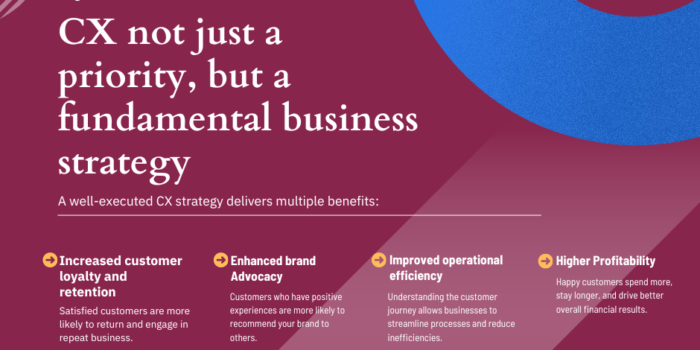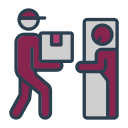
A feasibility study is an important tool for businesses to assess the viability of a new project or venture. It involves a detailed analysis of the project’s potential benefits, costs, and risks, as well as an evaluation of the project’s technical, operational, legal, and market feasibility. It is an essential process that evaluates the practicality and potential success of a proposed project or venture. It is conducted to determine whether a project is viable, achievable, and worth pursuing. The following are some reasons why a feasibility study is important
- Helps in identifying potential risks: Conducting a feasibility study helps to identify potential risks and challenges that may arise during the project’s implementation. By identifying potential issues early, the project team can develop effective strategies to mitigate or avoid them.
- Saves time and resources: By conducting a feasibility study, the project team can determine whether a project is viable and worth pursuing before investing significant time and resources. This can prevent the team from pursuing a project that is not feasible, thereby avoiding unnecessary costs and delays.
- Facilitates decision-making: A feasibility study provides critical information to decision-makers, allowing them to make informed decisions about whether to proceed with a project or not. This helps to ensure that the organization’s resources are directed towards projects that have a high likelihood of success.
- Improves project planning: A feasibility study provides insights into the project’s requirements, constraints, and opportunities. This information can be used to develop a more comprehensive project plan, ensuring that all aspects of the project are adequately addressed.
In this blog, we will cover the steps involved in conducting a comprehensive feasibility study, including both financial and market feasibility analysis. Here are the steps to conduct a feasibility study.
Step 1: Define the project scope and objectives
The first step in conducting a feasibility study is to define the scope and objectives of the project. This involves determining the purpose of the project, the desired outcomes, and the target audience or market. For example, if a company is considering launching a new product line, the scope of the project would include the types of products to be offered, the target market, and the desired outcomes, such as capturing a certain percentage of the market share.
Step 2: Gather information
The second step in conducting a feasibility study is to gather information about the project. This includes both primary and secondary research. Primary research involves collecting new data through surveys, focus groups, and interviews. Secondary research involves analyzing existing data from market reports, competitor data, and industry publications. This information can be used to gain insights into the potential demand for the product, the competitive landscape, and the regulatory and legal requirements.
Step 3: Conduct a preliminary analysis
The third step in conducting a feasibility study is to conduct a preliminary analysis of the project. This involves analyzing the strengths, weaknesses, opportunities, and threats of the project, also known as a SWOT analysis. The SWOT analysis can help to identify potential risks and opportunities associated with the project, as well as potential areas of improvement.
Step 4: Analyze financial feasibility
The fourth step in conducting a feasibility study is to analyze the financial feasibility of the project. This involves estimating the costs of developing and launching the project, as well as the potential revenue streams. A financial model can be created to estimate the project’s potential profitability and return on investment. This analysis can help to identify potential risks and uncertainties associated with the project, as well as potential areas of improvement.
Step 5: Analyze market feasibility
The fifth step in conducting a feasibility study is to analyze the market feasibility of the project. This involves evaluating the potential demand for the product or service in the target market. Market research can be conducted to gather data on consumer preferences, behaviors, and attitudes towards the product or service. This analysis can help to identify potential risks and uncertainties associated with the project, as well as potential areas of improvement.
Step 6: Assess operational feasibility
The sixth step in conducting a feasibility study is to assess the operational feasibility of the project. This involves evaluating the project’s ability to meet operational requirements and to be implemented successfully. This analysis can help to identify potential risks and uncertainties associated with the project, as well as potential areas of improvement.
Step 7: Evaluate legal and regulatory feasibility
The seventh step in conducting a feasibility study is to evaluate the legal and regulatory feasibility of the project. This involves assessing the project’s compliance with relevant laws, regulations, and standards. This analysis can help to identify potential risks and uncertainties associated with the project, as well as potential areas of improvement.
Step 8: Determine overall feasibility
The eighth step in conducting a feasibility study is to determine the overall feasibility of the project. This involves evaluating the results of the financial, market, operational, and legal and regulatory feasibility analyses to determine whether the project is feasible. If the benefits outweigh the costs and risks, the project may be deemed feasible. If not, the project may need to be modified or abandoned.
Step 9: Present findings and recommendations
The final step in conducting a feasibility study is to present the findings and recommendations to stakeholders. This involves summarizing the results of the analysis and providing a clear recommendation on whether or not to proceed with the project. The report should include a detailed explanation of the analysis, highlighting the potential benefits, costs, risks, and opportunities associated with the project. The report should also outline any potential areas of improvement or modifications that could be made to improve the feasibility of the project.
Examples of feasibility studies
Let’s look at some examples of feasibility studies to better understand how they are conducted.
Example 1: Feasibility study for a new product line
A company is considering launching a new line of organic snacks. The feasibility study would involve conducting market research to determine the potential demand for the product, analyzing the costs associated with developing and launching the product, and estimating the potential revenue streams. The analysis would also evaluate the potential risks and opportunities associated with the product, such as potential competition from other organic snack brands or changes in consumer preferences. Based on the analysis, the feasibility study report would provide a recommendation on whether or not to proceed with the product line.
Example 2: Feasibility study for a new manufacturing plant
A company is considering building a new manufacturing plant in a different location. The feasibility study would involve analyzing the costs associated with building the plant, evaluating the potential revenue streams, and assessing the operational feasibility of the project. The analysis would also evaluate the legal and regulatory requirements associated with building the plant. Based on the analysis, the feasibility study report would provide a recommendation on whether or not to proceed with building the plant in the selected location.
Conclusion
A feasibility study is an essential tool for businesses to assess the viability of a new project or venture. It involves a detailed analysis of the project’s potential benefits, costs, and risks, as well as an evaluation of the project’s technical, operational, legal, and market feasibility. By conducting a thorough feasibility study, businesses can identify potential risks and opportunities associated with a project, as well as potential areas of improvement. This can help businesses make informed decisions on whether or not to proceed with a project and can increase the likelihood of success.
Discover how market intelligence can help your business stay ahead of the competition. Learn about market research, strategic insights, and real-world examples to inform your growth strategy. Stay informed with our expert insights on market intelligence. Reach out to our consultants to know more.






 Market Research
Market Research Consumer Research
Consumer Research Industry Research
Industry Research Market Entry Strategy
Market Entry Strategy Feasibility Studies
Feasibility Studies Product Research
Product Research User Research
User Research Automobile & Mobility
Automobile & Mobility Banking and Finance
Banking and Finance Consumer Products & FMCG
Consumer Products & FMCG Ecommerce & Retail
Ecommerce & Retail Industry & Manufacturing
Industry & Manufacturing Government & Public Sector
Government & Public Sector Industry Associations
Industry Associations Technology & Software
Technology & Software Venture Capital & PE
Venture Capital & PE Consulting & Advisory
Consulting & Advisory India Entry Market Research
India Entry Market Research Innovation Consulting
Innovation Consulting KX Market Radar
KX Market Radar Business Model Development
Business Model Development Gen Z Navigator
Gen Z Navigator